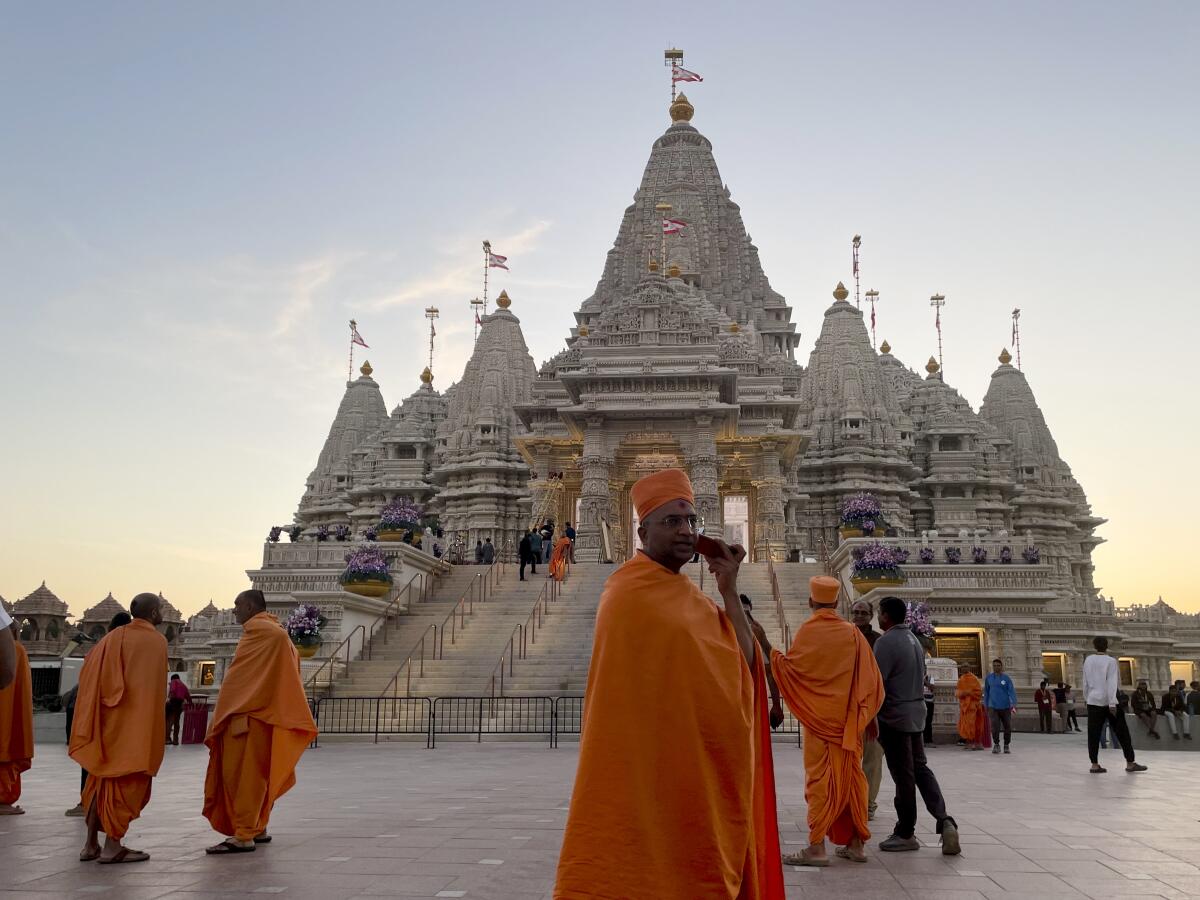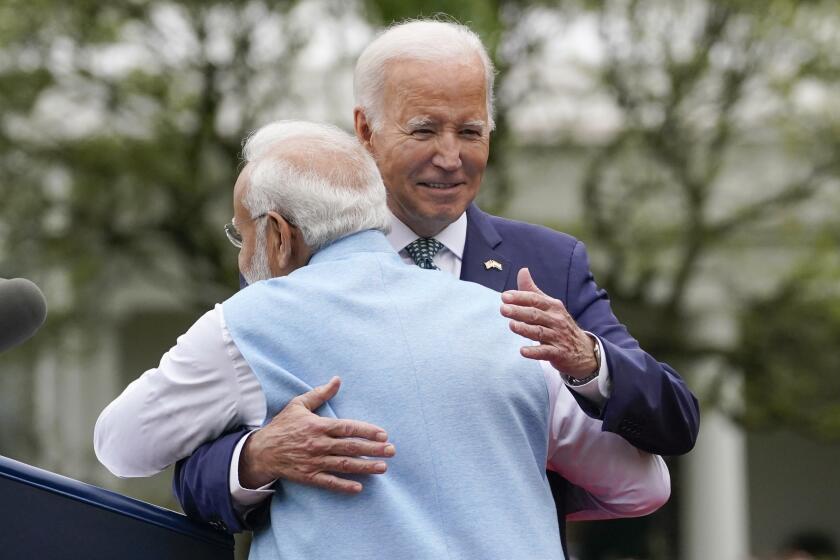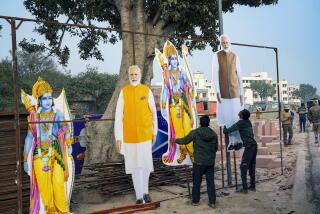Largest Hindu temple outside India in the modern era opens in New Jersey

- Share via
ROBBINSVILLE, N.J. — If stones could talk, sing and tell stories, Yogi Trivedi believes the marble and limestone that adorn the spires, pillars and archways of the stunning Hindu temple in central New Jersey would compose a paean to the divine.
The tales these stones tell are those of seva (selfless service) and bhakti (devotion), which form the core of the Swaminarayan sect, a branch of Hinduism, said Trivedi, a scholar of Hinduism at Columbia University.
It took a combined total of about 4.7 million hours of work by artisans and volunteers to hand-carve about 2 million cubic feet of stone. The four varieties of marble from Italy and limestone from Bulgaria traveled first to India and then over 8,000 miles across the world to New Jersey.
They were then fitted together like a giant jigsaw to create what is now touted as the largest Hindu temple outside India to be built in the modern era, standing on a 126-acre tract. It will open to the public Monday.
The largest temple complex in the world is the Ankgor Wat, originally constructed in the 12th century in Krong Siem Reap, Cambodia, and dedicated to the Hindu god Vishnu by King Suryavarman II. It is now described as a Hindu-Buddhist temple, and is one of 1,199 UNESCO World Heritage sites.
The Robbinsville temple is one of many built by the Bochasanwasi Shri Akshar Purushottam Swaminarayan Sanstha or BAPS, a worldwide religious and civic organization within the Swaminarayan sect.
“Service and devotion are the two basic elements that form the subtle foundation of how a temple so majestic gets built here in central New Jersey,” said Trivedi, who studies the Swaminarayan faith tradition and follows it.
This temple will be the third Akshardham or “abode of the divine” the organization has built after two others in New Delhi and Gujarat, where BAPS is headquartered. The former is the largest Hindu temple complex in the world. The sect, which will celebrate its 50th year in North America next year, oversees more than 1,200 temples and 3,850 centers around the world.
The New Jersey Akshardham, which has been in the works for about 12 years, came under scrutiny and criticism after a 2021 civil lawsuit alleging forced labor, meager wages and grim working conditions.
Twelve of the 19 plaintiffs have now retracted their allegations and the lawsuit is on hold pending an investigation “with which BAPS continues to cooperate fully,” Trivedi said.
The complaint alleges that those exploited were Dalits or members of the former untouchable caste in India. Caste is an ancient system of social hierarchy based on one’s birth.
The case continues to raise questions among activists fighting caste discrimination and those advocating for workers’ rights, about the blurred lines between uncompensated work and the concept of selfless service, which followers of the faith say constitutes their core belief.
President Biden emphasized the power of democracies as he hosted Indian Prime Minister Narendra Modi at the White House.
Trivedi said these allegations weighed heavily on community members because their faith has always taught them “to see the divine in all and love and serve them as manifestations of the divine.” He said Pramukh Swami Maharaj, the sect’s fifth spiritual successor, who envisioned such a temple campus in the United States, was a progressive guru who cared deeply about social equality.
Trivedi said the temple would not have been possible without the service of thousands of volunteers, many of whom took time off school and work to serve in different capacities. This might be the first Hindu temple where women were involved in the actual temple construction under the artisans’ supervision, he added.
This week, families from across the country have been streaming into the temple campus to get a sneak peek. Devotees bowed to one another and to monks in saffron robes. As the sun set, two men in white robes performed a ceremony in front of the 49-foot-tall statue of the Bhagwan Nilkanth Varni, who later became known as Bhagwan Swaminarayan, the founder of the sect who ushered in a moral and spiritual renaissance in western India.
Other worshipers prostrated on the floor pressing their foreheads to the ground in reverence.
Avani Patel was visiting from Atlanta with her husband and their two children, ages 11 and 15.
Patel, who said she and her husband, Pritesh, were among the volunteers who gave their time to create the complex, knelt inside the temple. She marveled at the ornate ceiling, her hands folded in prayer.
“It’s jaw-dropping, mind-blowing,” she said. “You can see divinity radiating through it all.”
More to Read
Sign up for Essential California
The most important California stories and recommendations in your inbox every morning.
You may occasionally receive promotional content from the Los Angeles Times.











